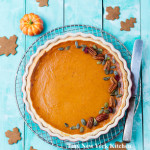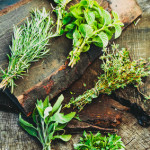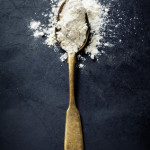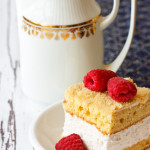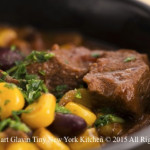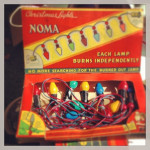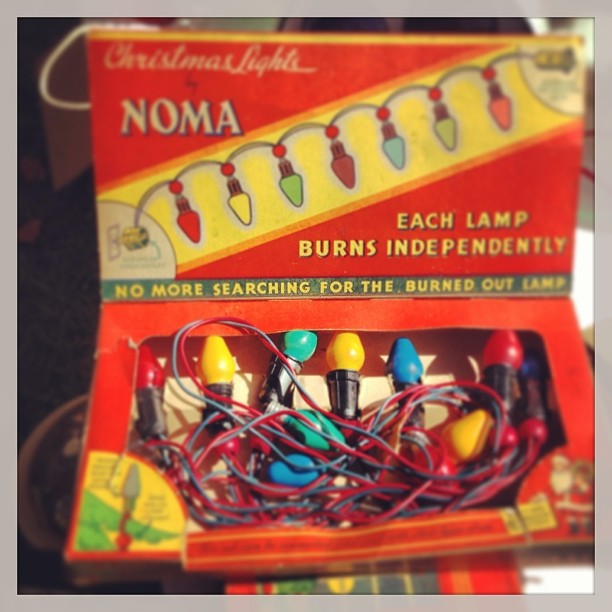Whether you’re hosting your first Thanksgiving or you’ve been making the family feast for decades, refer to our Thanksgiving timeline checklist to keep your prepping, shopping, and cooking on track for the big day.
1 TO 2 WEEKS BEFORE THANKSGIVING
Confirm the number of guests and plan your menu
Order your turkey
Plan your table setting, serving dishes, and decorations
Read through all your recipes to determine the food and cooking equipment you will need
Make your shopping and to-do lists
Shop for nonperishable food items, plus any cooks’ tools, cooking equipment and tableware you need
A FEW DAYS BEFORE
Prepare the turkey brine, but do not add the turkey, cover and refrigerate
Prepare food that can be made several days ahead of time, such as pie pastry and cranberry sauce
THE DAY BEFORE
Complete your food shopping
If you ordered a fresh turkey, pick it up or have it delivered
If you are brining the turkey, place it in the brine and refrigerate
Prepare dishes that can be made in advance such as soups and pies
Chop vegetables for side dishes; refrigerate in covered bowls or sealable plastic bags
Peel and cut the potatoes, place in cold water and refrigerate
Set the table
THANKSGIVING DAY
Refrigerate wines that need chilling
Prepare the stuffing and other side dishes
Prepare the turkey for roasting and put in the oven at the determined time
If you plan to stuff the turkey, do not stuff it until just before you put it in the oven
While the turkey is roasting, make the mashed potatoes
While the turkey is resting, make the gravy and cook or reheat the side dishes
Carve the turkey and serve your guests
Have a wonderful Thanksgiving!
“Work With What You Got!”
©Tiny New York Kitchen © 2018 All Rights Reserved
Fresh herbs have delighted the senses and tantalized the taste buds for centuries. In medieval times great bundles of herbs were strewn on castle floors as a natural air purifier. Brides often chose to wear delicate crowns of flowers interwoven with herbs upon their heads, and both Western and Eastern medical practitioners may employ herbal remedies for their patients.
Many cooks are quite passionate about utilizing herbs in their favorite recipes. Especially bountiful herbs, which perfume our summer and fall gardens with beautiful scents and enhance the plate with their wonderful array of flavors. Using fresh herbs allows cooks to cut back on unnecessary salt, fat, and sugars, while naturally elevating main ingredients.
Brimming with health benefits, each herb plays a special role in beautifying and fortifying the body. Rosemary, for example, may improve memory. Parsley is packed with apigenin, which could potentially reduce the chances of cancerous growths and tumors. Oregano, like all other herbs, has anti-inflammatory properties that may reduce joint inflammation. Oregano is also particularly anti-bacterial and anti-fungal, and can contribute to flawless skin and glossy hair. The calcium content in basil and parsley can help maintain healthy teeth. Mint is calming and soothing and can be a digestive aid. The heady aroma of fresh herbs may help relieve any effects of nausea, as well as soothing and reviving the senses.
Basil’s affinity with tomatoes is a most engaging taste combination. Serve sun warmed tomatoes sprinkled with shards of fresh basil leaves and drizzled with olive oil. The slightly sharp bite of chives enlivens potatoes, eggs and salad dressings. Cilantro is a must for Mexican and Asian dishes. Dill adds a light, lovely layer to fish, while the snappy tang of parsley is delightful in tabouli, potato salad, and pasta. Mint is essential for tall glasses of cold ices tea or lemonade and also for embellishing summer fruit platters. Transport your taste buds by making a salad with a bounty of vegetables and a large handful of freshly minced oregano, basil, parsley, and dill. Or scent your grill with the woody stalks of rosemary. They make great skewers, infusing meat, fish, and vegetables with bright, strong flavors.
Clean herbs by soaking in a bowl of cool water, changing the water several times, or until you no longer see any dirt in the bottom of the bowl. Spin dry in a salad spinner or on layers of paper towels. For hot dishes, add herbs at the end of cooking time to avoid diluting their essence.
“An herb is the friend of physicians and the praise of cooks.” – Charlemagne
www.tinynewyorkkitchen.com
“Work With What You Got!”
©Tiny New York Kitchen © 2018 All Rights Reserved
I love to bake all year long, but during the holidays I’m on “baking overdrive.” To make better cakes here are some simple tips to help you with the best outcome possible.
Don’t use cold eggs. The eggs really should be at room temperature, otherwise the mixture won’t emulsify properly. If you’re short on time place eggs in a bowl of warm water for 15 minutes.
Make sure to measure all ingredients precisely. Baking is an art form, but also a science.
Position pans as close to the center of the oven as possible. If you’re placing more than one pan in the oven, they should not touch each other or the oven walls. If your oven isn’t wide enough to put pans side by side, place them on different racks.
If a recipe calls for 1 cup of sifted flour, then first sift the flour and then measure it. If it calls for 1 cup flour sifted, measure the flour, then sift it. It may seem subtle, but it can make the difference between a light, fluffy cake and a heavy one.
Allow at least 20 minutes for your oven to preheat. It’s best to turn the oven on before you start working on your recipe.
Avoid opening the oven door. Opening the oven door too often can make a cake fall, so use the window in your oven door to check the cake’s process when possible.
Remember that each oven heats differently. Check for doneness 10 minutes before the recipe suggests. For most recipes, a cake is ready when it starts pulling away from the sides of the pan and a toothpick inserted in the center comes out clean.
Invest in wire cooling racks. Cakes cool faster and don’t get soggy when set out on a rack. Leave them in the pans for 10 to 15 minutes before unmolding, and then place on a rack to cool completely before frosting. Angel, chiffon and sponge cakes should be left in the pan to cool to prevent collapsing.
Unfrosted cakes can be stored, well wrapped in plastic, at room temperature for 24 hours. If storing unfrosted cakes for more than 24 hours, it is best to freeze them rather than refrigerate them. Wrap the layers in plastic wrap and then heavy-duty foil to freeze, let cake thaw in the refrigerator before frosting.
To store frosted cakes, keep at room temperature under a cake dome or large bowl unless the recipe specifies refrigeration.
For smooth and easy cake removal, prep your pans properly. When a recipe calls for greasing and flouring, place a piece of parchment or waxed paper on the bottom of a pan (trace and cut it to fit). Coat the sides and bottom with softened butter, and then dust with flour, turning the pan on its side to get full coverage and tapping out the excess. For chocolate cakes, swap in cocoa powder for flour.
Angel, chiffon, and sponge cakes should go into clean, untreated pans since they need to adhere to the sides in order to rise properly.
Happy Baking!
“Work With What You Got!”
© Victoria Hart Glavin Tiny New York Kitchen © 2016 All Rights Reserve
Friendsgiving
I’ve had friends, who for years, have been celebrating “Friendsgiving” and look forward to it every year. Friendsgiving is another way to celebrate the season with those who mean the most to you. A friend-focused feast is a great way to include those who don’t have plans on Thanksgiving or to try those new recipes you’ve been checking out. Whether you celebrate on Thanksgiving Day itself or hold a separate dinner altogether, Friendsgiving is a tradition that we, at Tiny New York Kitchen, can get behind.
“Work With What You Got!”
© Victoria Hart Glavin Tiny New York Kitchen © 2016 All Rights Reserved
Slow Cooking
If you have an old family recipe that you would like to make in the slow cooker, just follow these easy steps.
Cut the liquid required by a third to a half.
Brown meat first for extra color and flavor.
Add vegetables like onions, carrots, and squash at the beginning. Quicker cooking vegetables should be added later.
For a recipe that usually takes around an hour, cook for 4 hours on high or 8 hours on low.
No peeking! Because slow cookers can take awhile to reach optimum heat, it is important to keep them covered throughout the entire cooking period. Every time you lift the lid to check on progress, the cooker loses heat and it can take some time for it to get back up to the correct temperature.
“Work With What You Got!”
© Victoria Hart Glavin Tiny New York Kitchen © 2015 All Rights Reserved
10 Steps For Staying Happy Through The Holiday Season
Thanksgiving is almost here which marks the beginning of the holiday season. With so many holiday pressures often times we forget what truly is important. We are busy shopping, cooking and wondering how to deal with some unsettled family business. Over the weekend I came down with a nasty flu, which is in full swing as I write this. To be sick is no fun to say the least, but I do take it as a sign to slow down and reflect. Here are some ideas for staying happy through the holiday season. I hope that you take time to enjoy the holidays.
Do Something Random For The Fun Of It
What have you always wanted to do, but came up with an excuse not to? What made you happy as a kid? Think about things you did, during the holidays, which were fun during the holidays and relieve them as a grown-up. If you have children then introduce your fond activities to your kids. Go ice-skating, go to a hokey play, watch your favorite movie or read a favorite children’s book.
Give Back
Doing something for others is a powerful thing. Volunteer your time or donate money to a favorite cause or something that speaks to your heart is important. It’s a good thing to do and trust me it will make you feel good.
Take Care Of Yourself
It’s important to do things for yourself. Schedule a mani-pedi or a massage. Take a nap, take a day off and read in bed. Do whatever it is that you need to do to recharge.
Commune With Nature
So often we forget to go outside and do something for nature. Pick up garbage, feed the birds, start a compost pile, rake up leaves or whatever needs doing. You will be doing something good for nature and by being outside you will feel better.
Get Active
It may be chilly outside, but go out for a walk or run anyway. We need the vitamin D and to get our blood pumping. Ride your bike, go skiing or sledding. If you can’t get outdoors then go to your local gym and take an exercise class. It’s important to get those endorphins going.
Try Cooking A New Recipe
Choose a recipe that peaks your interest and try making it. If it’s a big success then perhaps you can duplicate it for a holiday dinner. Even if you don’t make it for a holiday dinner you have it in your back pocket of recipes. If it doesn’t turn out then oh well at least you tried it.
Favorite Childhood Food
Everyone has a favorite childhood food. Growing up in Lincoln, Nebraska my mother used to make something called Runzas. Whenever I need a “childhood comfort shot” I will make Runzas (thank goodness my mother left me the recipe). My husband grew up Italian in Castro Valley. During the holidays his aunt would bring an Italian rum cake to the family gatherings. My husband has been searching for this cake for over 40 years, but can’t seem to find it. I’ve tried several times to duplicate it from his description. The point here is, think about what your favorite foods were as a child. Try and duplicate them and share them with the people that you love. Trust me…food and memory are powerful things.
Honor Your Ancestors
Holidays can be emotional. We all have both happy and sad memories of people who have passed away. One way to honor those who have passed away is to make their favorite foods. Another is to watch an ancestor’s favorite movie. My father-in-law’s favorite movies was, “It’s A Wonderful Life.” After he passed away we would take the whole family and go to see, “It’s A Wonderful Life” at the local movie theater. Not one of us walked out of the theater with dry eyes. It was powerful, healing and an important holiday ritual. Take some quiet time to reflect and to be grateful for those people who are gone and were important in your life.
Forgive Friends & Family
Oftentimes living friends and family can be an emotional challenge. Forgive them. Lift the weight off of yourself and simply forgive them. This doesn’t mean that you should get right back into dysfunction (set boundaries and limitations). Deal with conflicts from your highest level of goodness and love.
Make Amends & Forgive Yourself
We have all wronged people that we love. Examine your past emotions and motivations in situations that are nagging your heart. Make amends; tell that person you are sorry. There is no need to go into “yeah but.” Simply “I am sorry I did fill in the blank.” Forgive yourself as well. Most of us are hard on ourselves, which creates stress whether we know it, or not. We all make mistakes. Forgive yourself. At the end of the day, at the end of the holidays the happy memories will not come from presents or material things as much as from genuinely connecting and appreciating your family, friends and yourself.
 Constitution Week – Foods of Our Forefathers Part III
Constitution Week – Foods of Our Forefathers Part III
The abundance of meat in America was a major change in the diet of the early settlers. Rabbits and squirrels were available year-round nearly everywhere, plus deer and other large game in many regions. As settlers moved west, buffalo gained importance in the diet. Fish, shellfish and wild fowl became common food, and they were all essentially “free.” The existence of these various forms of game was a literal life saver in times of uncertain crops and unbroken land. The game gradually diminished, of course, as the population expanded and settlers pushed west, but it provided a large share of the diet in early and frontier days.
Ham, of course, appeared on almost every settler’s table, rich or poor. It might be the only meat served at a meal or it might appear in company with more exotic roasts and fowl, but it was always there – breakfast, dinner and supper.
Corn was also a staple of the colonists, either fresh in summer, or as hominy or corn meal all year. Corn was also put to another use by an early Virginian, Captain George Thorpe, who may have been the first food technologist in America as he invented Bourbon whiskey shortly before he was massacred by the Indians in 1622.
Meal patterns for working people in rural early America were very different from those common today. Breakfast was usually early and light which consisted of bread, hominy grits, and sometimes fruit in season. Coffee, which was a new beverage at the time, was popular that is if it was available. A drink made from caramelized grain was sometimes substituted. Chicory was popular in the South, either alone or used to stretch the coffee. Tea was often made from local leaves such as sage, raspberry or dittany. Alcohol in some form was often served.
Breakfast in more elegant homes or large plantations might be later in the morning, and include thinly sliced roast and ham.
Dinner was served somewhere between midday and midafternoon, depending on the family’s circumstances, and was the big meal of the day. There was almost always ham, as well as greens (called sallat), cabbage and other vegetables. In the proper season, special dainties would appear – fresh fruits and berries, or fresh meat at appropriate butchering times.
Desserts could be simple such as a scooped out pumpkin, baked until done and then filled with milk, to be eaten right out of the shell. Or dessert could be more complex such as ice cream or other fruit flavored frozen pudding or a blanc mange. Blanc mange was prepared from milk and loaf sugar, flavored with a tablespoon or two of rosewater, thickened with a solution of isinglass (derived from fish bladder, soaked overnight in boiling water). This mixture was boiled for 15 to 20 minutes, then poured into molds to set.
If isinglass was not available (most was imported from England), homemade calves foot jelly could be substituted, but eh dessert was not as fine.
Various alcoholic beverages, including wines, applejack, “perry” (hard cider made from pears), or beer were commonly consumed.
In winter, peaches and other fruit disappeared from the dinner table, to be replaced by dishes made from stored apples and dried fruit of various sorts. Soups or broths also took their place. Milk grew scarce as cows “dried up” in the short days. Vegetables gradually decreased in variety as stored crops wilted.
Apples quickly became a staple in early America. Orchards were easy to start, required a minimum of care, and apples stored well. Housewives devised a multitude of “receipts,” including sauces and butters for off-season, as well as many using dried apples.
Supper was late and a light bread and butter, some of the left-over roast from dinner, fruit (fresh if in season, pickled and spiced otherwise), and coffee or tea.
To Be Continued…

